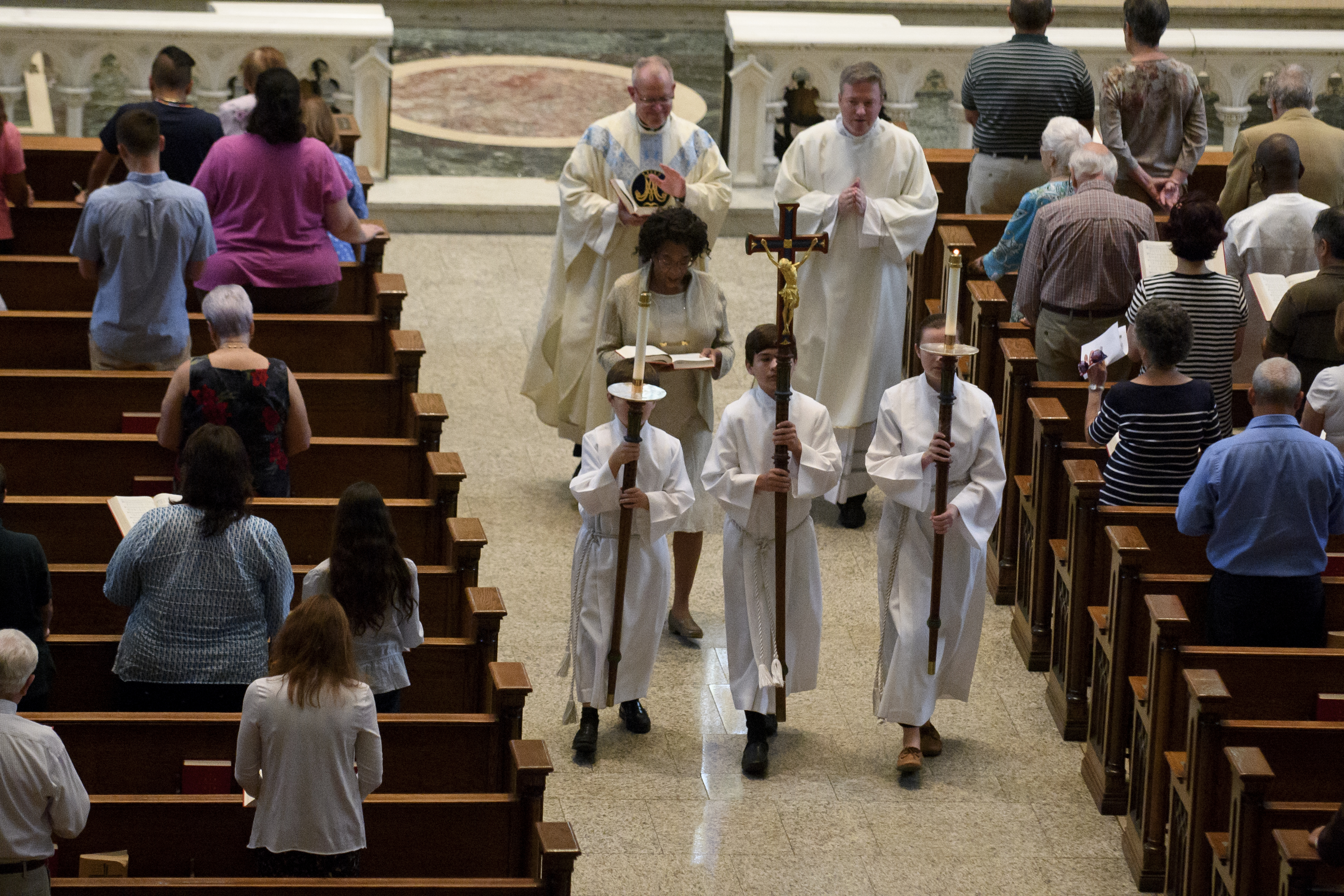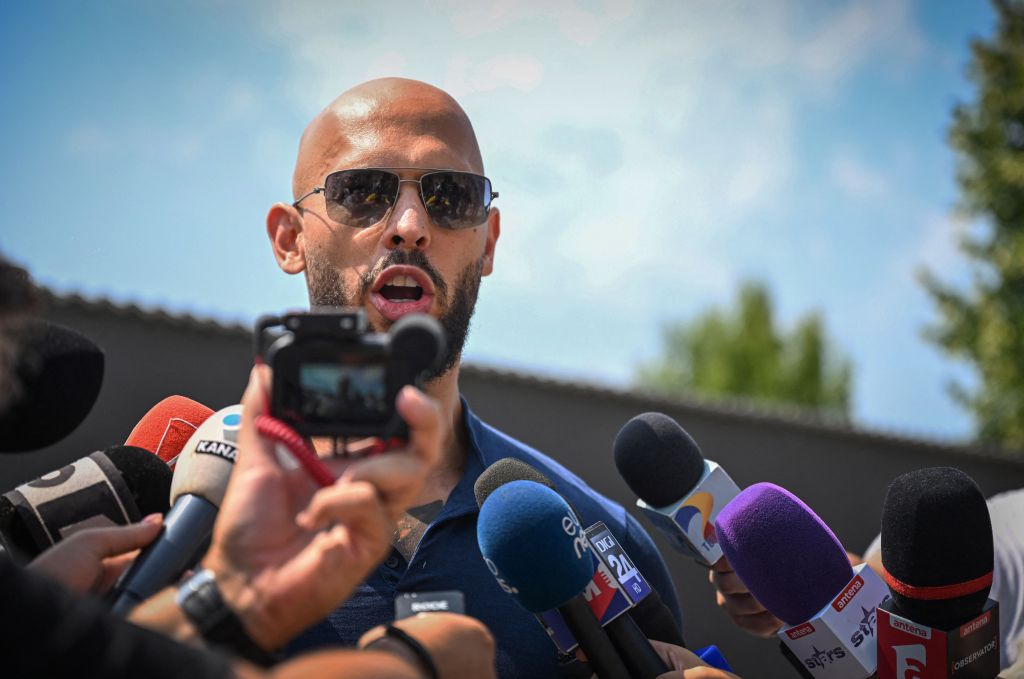The Catholic Church is facing a series of scandals that add up to one of its worst crises in years. In June, Theodore McCarrick, a retired cardinal and former archbishop of Washington who until recently advised the pope, was removed from the ministry after being accused of sexually assaulting a teenager for years. A month later, the New York Times reported on McCarrick’s alleged abuse of seminary students. He subsequently resigned and was completely stripped of his title—the highest-ranking Catholic official to suffer such consequences after abuse charges. Stir this together with Pennsylvania’s bombshell grand jury report that 300 priests abused 1,000 children over decades in August, the BuzzFeed News investigation into charges that nuns murdered children at a Vermont orphanage, and the accusation that Pope Francis knew about—and covered for—McCarrick’s actions, and you have a somewhat muddled but damning indictment of the entire Catholic Church.
The world has known, of course, about the Catholic priest abuse scandal for some time. In 2002, the Boston Globe‘s Spotlight team printed a series of investigative articles on several Boston priests who would later be convicted and sent to prison. Though that’s probably the most famous investigation, thanks to it being turned into an Oscar-winning film, there have been others, too. A decade later, for instance, Alex Gibney released Mea Maxima Culpa: Silence in the House of God, in which he interviewed four deaf boys abused by a head priest at their school. In February 2013, the pope prior to Francis, Benedict XVI (a.k.a. Joseph Ratzinger), was the first pontiff in nearly 600 years to resign from the position, perhaps, it’s been alleged, because of his role in covering up abuse scandals. The Church has largely tried to deal with child abuse by keeping it under wraps—by relocating accused offenders to a different parish, sometimes in a different country. (One was even sent to work at Disney World.)
Videos by VICE
But there have not yet been any real systematic changes to the Roman Catholic Church, even at a time when sexual misconduct and abuse is a matter of intense public concern because of #MeToo. As more and more young people leave the religion, a divided Vatican is in the precarious position of maintaining the tenants of an institution seemingly collapsing in on itself.
To help make sense all this—what, in the past few months, has exactly happened and why—below is a timeline of events from the middle of June to today.
June 20: Cardinal McCarrick Removed from Ministry
After an internal investigation discovers credible evidence that McCarrick sexually abused a teenager when he was a priest in Manhattan decades ago, the retired cardinal is removed from the ministry “at the direction of Pope Francis,” according to a statement from the Archdiocese of New York.
McCarrick declares his innocence, saying that he doesn’t remember anything. The charges were that he had repeatedly stuck his hand down the teenager’s pants, once while measuring the young altar boy’s Christmas cassock in 1971, and again a year later when, after months of calling him “good-looking,” he cornered him in a bathroom. (Both incidents occurred at St. Patrick’s Cathedral in New York City.)
McCarrick is also accused of sexual misconduct with three adults when he was the archbishop in Newark, New Jersey, according to the Archdiocese of Newark and the Diocese of Methuchen.
Additionally, the New York Times quotes two former priests—Robert Hoatson, who runs a recovery center for those sexually abused by the clergy, and Richard Sipe, who studies these cases of sexual abuse—who allege that McCarrick had been coercing seminarians to sleep with him throughout the 80s and 90s.
McCarrick becomes the highest-ranking Catholic official to ever be removed from the ministry for sexual abuse against a minor.
July 16: The New York Times Publishes a Blockbuster Report on McCarrick’s Sexual Abuse of Seminary Students and Minors
The newspaper reports on additional charges that some church officials had known about McCarrick’s sexual abuse and harassment against seminarians for decades, and that he had also abused an 11-year-old boy—“a close family friend”—for close to 20 years. According to the Times, McCarrick, a superstar within the Church, was so charismatic and convincing that he once apparently persuaded a man to enter the priesthood after talking to him in an airport. His abuse of men studying to be priests primarily happened at his shore house in Sea Girt, New Jersey, where he would invite a handful of students over to his place, and—after pizza and beer and general socializing—would instruct one of them to sleep in his bed and start rubbing his back.
One of the victims, Robert Ciolek, also describes going to a Yankees game with McCarrick and sitting in George Steinbrenner’s box with Henry Kissinger. Afterward, McCarrick reportedly took Ciolek to the room of a hospital he used during overnight visits to the city and requested they share a mattress. Another unnamed priest details how McCarrick, when he was a seminarian, asked him to put on “a striped sailor shirt and a pair of shorts he had on hand” before they lay together.
The Times reports that though the first written and documented complaint against McCarrick was filed in 1994, he continued to be promoted within the Church. His rise culminated in his position as archbishop of Washington, DC, where, as one of the most recognizable cardinals in the world, he became a political player—speaking, for example, at the funerals of Ted Kennedy and Beau Biden.
Ultimately, McCarrick reached settlements with two seminarians, in the tens of thousands of dollars, in 2005 and 2007.

July 28: McCarrick Resigns
Pope Francis accepts Cardinal McCarrick’s resignation from the College of Cardinals, in what is very likely the first time a cardinal has stepped down because of sexual abuse accusations. McCarrick will no longer advise the pope, or travel with him, and though he’s still technically a priest, he’s stripped of the title of “cardinal.” According to Father James Martin, a vocal progressive priest who frequently appeared on The Colbert Report, this means being called “Your Eminence” as well—which, Martin points out, is a bigger deal than it might appear. Martin compares McCarrick’s punishment to that of Cardinal Bernard Law, who resigned as archbishop of Boston after his systemic coverup of child sex abuse only to keep his titles (all of them) and become an “archpriest” in Rome until his retirement in 2011. Francis’s punishment of McCarrick is, in other words, unprecedented in its swiftness and severity.
McCarrick awaits canonical trial for the crimes.
August 14: A Report Reveals That 300 Priests Abused 1,000 Children in Pennsylvania
A grand jury finds, after sifting through 2 million internal church documents, that six dioceses in Pennsylvania—in Allentown, Erie, Greensburg, Harrisburg, Pittsburgh, and Scranton—have previously covered for 300 priests who sexually abused at least 1,000 children since 1947. Pennsylvania’s attorney general, Josh Shapiro, says that it is the “largest, most comprehensive report into child sexual abuse within the Catholic Church ever produced in the United States.”
The 1,400-page report details case after case of abuse—one, for example, where a priest had a victim wash his mouth out with holy water after a rape; another where a teenage boy was abused so badly that he suffered spinal injuries and became addicted to painkillers, later dying of a drug overdose; and yet another where a priest impregnated a girl and organized her abortion.

August 20: The Pope Condemns the Church’s Actions on Sexual Abuse Against Minors
Following the news out of Pennsylvania, the Vatican releases a letter from Pope Francis in which he acknowledges the failures of the Church in combatting priests’ sexual abuse toward minors.
“We showed no care for the little ones,” he writes. “We abandoned them.”
August 25: Missouri Begins to Investigate Church Crimes in the State
A little more than a week after the Pennsylvania report, Missouri’s attorney general, Josh Hawley, launches an investigation into the Catholic Church in his state, acknowledging that the Archdiocese of St. Louis is fully cooperating.
August 25–26: Francis Visits Ireland on Papal Mission
Francis arrives in Ireland for two days, the first papal visit to the country in almost 40 years, for the World Meeting of Families, where Catholics get together to cheer and pray. He has full days of pope activities—i.e. mass, driving around in his popemobile, and stopping at homeless shelters—in a country that has become increasingly secular after years of Church scandals. He spends much of his stay apologizing for the Church’s inaction toward abusive priests.
August 26: The Pope Concludes His Visit to Ireland with Harsh Criticism
Archbishop Carlo Maria Viganò, a known conservative critic of Pope Francis and former Vatican diplomat to the United States, publishes a 7,000-word letter on the pontiff’s final day in Ireland, claiming that Francis helped cover up sexual abuse in the Church and calling for his resignation. In particular, Viganò asserts that the pope knew for years about the accusations against McCarrick and failed to act. The conservative arm of the Church, which largely blames homosexuality for such scandals, has been at odds with the Francis’s progressivism, and that political battle colors the accusations in some people’s eyes.
When asked about Viganò’s statements by reporters, however, Francis does not admit nor deny the accusations.
“I will not say a single word about this,” he says. “I believe the statement speaks for itself. And you have the sufficient journalistic ability to make your conclusions. It’s an act of trust.”
Sign up for our newsletter to get the best of VICE delivered to your inbox daily.
Follow Alex Norcia on Twitter.




